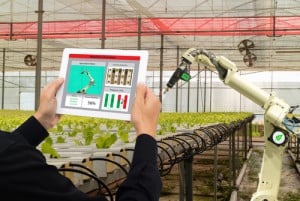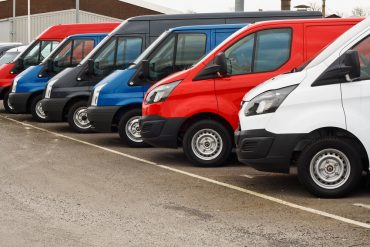
Well-established sectors like agriculture may see the biggest efficiency gains and improvements from big data and analytics. Is the data-revolution here?
Big data and analytics are helping to improve and transform a multitude of industries in the modern world. The most impactful thing such technologies do is provide detailed and real-time insights into operational and financial activities. In agriculture, this very thing is playing out as we speak.
Farmers, for instance, are using data to calculate harvest yields, fertilizer demands, costs savings and even to identify optimization strategies for future crops.
See also: How AI can aid the agriculture sector
The question is less whether or not the technology offers benefits — it indeed does — and more about the “how” it achieves such a thing. Here are five ways in which big data in agriculture is improving conditions or operations.
#1: Monitoring Natural Trends
A significant risk factor in farming and agriculture is out of the control of those doing the brunt of the work. Pest and crop diseases, for example, can decimate entire harvests, as can natural disasters like storms or extreme weather. Before big data existed, it was almost impossible to predict such events. Yes, experienced farmers may be able to spot tell-tale signs of a pest problem — but it’s often already too late by then.
Big data and monitoring technologies can track such events and even predict them entirely. By feeding past and present data into a system and extracting insights through valid algorithms, data science can effectively boost future yields. This can save farmers and supply chain stakeholders a lot of money overall, as well as help facilitate distribution patterns and supply.
Big data drives the incorporation of modern tech into the field. UAVs or drones can be used to fly over and assess land patterns. The mapping data collected can then be analyzed and scoured for useful intel. Maybe erosion in a particular section of cropland warrants dealing with this year?
Alternatively, IoT sensors can track and monitor croplands and plants remotely.
#2: Advanced Supply Tracking
In farming and agriculture today, outside of more traditional scenarios, a farmer is often beholden to a particular supplier or partner. They may, for example, be sending a certain amount of their most recent harvest to a local grocer or department chain. Regardless of who is partnered up in agriculture, it’s not always possible to know precisely how much and when a particular crop is going to be ready. This coupled with changing demand on the consumer side can lead to severe supply issues.
Big data can alleviate some of the problems that arise in the supply chain, merely because it affords more oversight regarding the crops and harvest each season. This is true of not just the farmers working with the plants, but everyone else along the supply chain, too, including distributors, packagers, retailers, and more. When passed on, the data can genuinely help everyone prepare for the current progress, whether that includes greater or fewer quantities than expected.
#3: Risk Assessment
In general business, management and planning teams often have the benefit of detailed risk assessment reports. Until now, that’s never been possible in the world of agriculture. Sure, experience may dictate that taking a specific action is going to produce apparent consequences, but data-driven risk assessment affords so much more than that.
With big data, nearly every system, decision or event can be considered in the risk analysis plan. Every mistake or potential hurdle can be accounted for, along with not just the appropriate solution, but an expected list of results, too. Farmers can be sure that taking action won’t destroy their entire crop. More importantly, they can use real-time data to ensure damage remains minimal.
#4: Ideal Crops and Consumer Expectation
Let’s say spring and early summer are just over the horizon. Naturally, this is when the strawberry season kicks off — alongside many other crops. Except, over the coming year, the demand for strawberries is vastly lower than in previous seasons.
Rather than filling up an entire plot with strawberries, farmers can account for the lowered demand. This can be true in the opposite direction, too, when demands are higher. Big data enables this at a more advanced level than ever before.
Farmers can see precisely how much they produced in previous years, what that meant for customer impact, how this affected supply and demand and even tips for ways to improve their operations. They could cut excess waste by producing fewer crops for a lower demand season, for instance, to save both money and space to grow alternatives.
#5: Data-Driven Industry
The other proponent of big data is that the systems are synced up with external platforms for a considerable amount of data and insights. It ties into the whole “connected” and smart side of technology.
Machine learning and algorithmic tools can be designed to factor in any number of external insights or information. Farmers can then use predictive modeling techniques to plan or act accordingly — think weather patterns, consumer demands and trends and even historical industry events. This data will help those in the agriculture industry to understand how the surrounding world affects their business.
What should they plant? When is the best time? What earnings can they expect? Are the prices of supplies rising, and how does this affect profits?
This all works to create a collaborative, data-driven industry that operates in new, innovative ways as opposed to following strategies used in the past. The beauty of this is that we don’t have to eliminate legacy strategies to make room for data-driven solutions. In fact, we can combine it all to create one of the most effective, successful operations ever to exist.





























